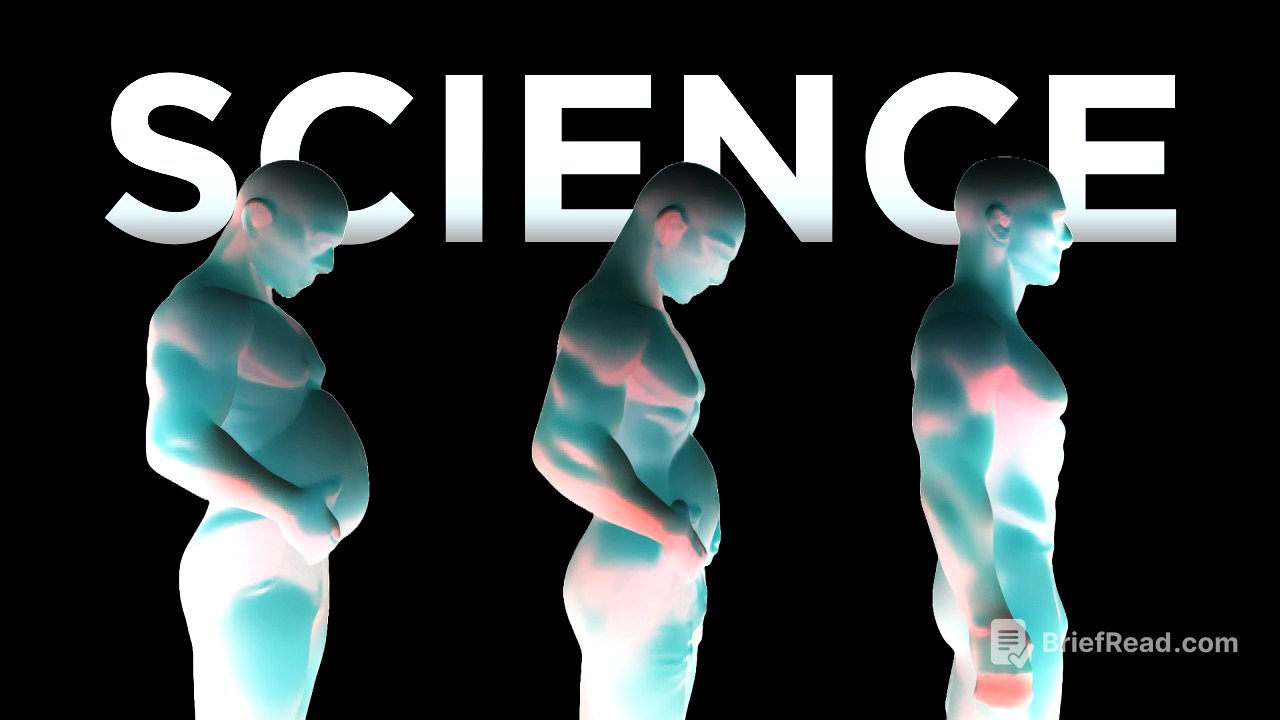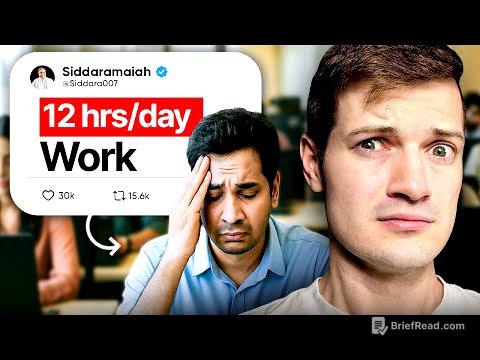TLDR;
This video explains how the body burns fat and provides strategies for maximizing fat loss while preserving muscle. It covers topics like spot reduction, the roles of cardio and weightlifting, the impact of fasted exercise, and the importance of breathing. The video also offers two plans: a fast-results plan involving structured weekly workouts and a slower, habit-based plan for those with busy schedules. Key takeaways include understanding the science behind fat burning, combining cardio and strength training, prioritizing protein and fiber in your diet, and getting enough sleep.
- Fat burning happens when your body uses stored fat for energy due to increased activity or reduced calorie intake.
- Spot reduction of fat isn't possible; fat loss is systemic and influenced by genetics, blood flow, and hormone sensitivity.
- Both cardio and weightlifting are important: cardio burns fat, while weightlifting protects muscle.
- Exercising on an empty stomach can boost fat burning but is best for low to moderate intensity workouts.
- Proper breathing techniques can increase fat burning efficiency.
How Your Body Burns Fat [0:47]
When you eat less or move more, your body needs extra energy, so it turns to your fat stores. Fat cells release energy, which breaks down and travels through your bloodstream to fuel your body. To lose fat, you need to push your body to use more energy, getting to the point where you're tired and out of breath. Every breath you exhale during this process is literally burned fat, which leaves your body as carbon dioxide and water. However, the body can sometimes burn muscle instead of fat, which needs to be avoided.
Why Belly Fat is Stubborn [2:07]
You can't spot reduce fat, and belly fat tends to be the first to appear and last to disappear due to genetics, blood flow, and hormone sensitivity. Men tend to store fat in the belly, while women store it in the hips, thighs, and lower belly. The belly has lower blood flow, meaning fewer fat-burning hormone signals reach it. It also contains more alpha 2 receptors, which resist fat release, and fewer beta 2 receptors, which promote it. Training abs strengthens the muscles underneath but doesn't target belly fat specifically.
Cardio vs. Weightlifting for Fat Loss [3:36]
Cardio and weightlifting work differently for fat loss. Cardio uses glucose first, then triggers the afterburn effect, burning fat after the workout. Weightlifting protects muscle from being burned during fat loss, especially after cardio. Combining both in the right balance is important to lose fat while maintaining a sculpted shape.
Exercising on an Empty Stomach [4:55]
Exercising on an empty stomach, especially in the morning, can help you burn fat faster because insulin levels, blood sugar, and glycogen stores are low, so your body taps directly into fat. This works best with low to moderate intensity workouts. For weightlifting or high-intensity interval training, it's better to eat something light and quick to digest beforehand.
Sweating and Losing Weight [5:42]
Sweating more doesn't mean you're burning more fat; it's just your body's cooling system. Weight loss after sweating is temporary water loss. Cutting calories too hard can lead to muscle loss instead of fat loss because the body panics and burns muscle for energy, especially if you skip strength training.
Breathing for Fat Loss [7:00]
Breathing correctly can boost your fat-burning ability by up to 20% because fat burning is a process of oxidation. Breathe through your nose, with your belly, and slow and deep. Exhale more forcefully to clear out carbon dioxide and make room for fresh oxygen.
Fastest Fat Burning Plan [8:05]
Start the week with high-intensity cardio on Monday, followed by full-body weight training on Tuesday with a 20-minute slow walk afterward. Wednesday is for steady cardio. Thursday is for active recovery. Friday includes another weight training session followed by light cardio. Saturday is a long-duration cardio day, and Sunday is a rest day.
What to Eat to Double Fat Loss Results [10:19]
Eat high-protein foods, increase fiber intake, stay in a caloric deficit, and drink three to four liters of water daily. Avoid sugar and processed junk. Get at least 7 to 8 hours of sleep every night.
Lazy/Busy People Fat Burning Plan [11:03]
For those too busy for intense workouts, focus on updating daily habits in three phases. Phase one: move lightly by adding gentle movement after every meal. Phase two: eat smartly by eating slowly, stopping when 80% full, including protein in every meal, and swapping refined carbs for whole grains. Phase three: sleep deeply by ensuring a cool, dark, and distraction-free bedroom. This plan takes time but rewires your mindset for long-term healthy habits.









